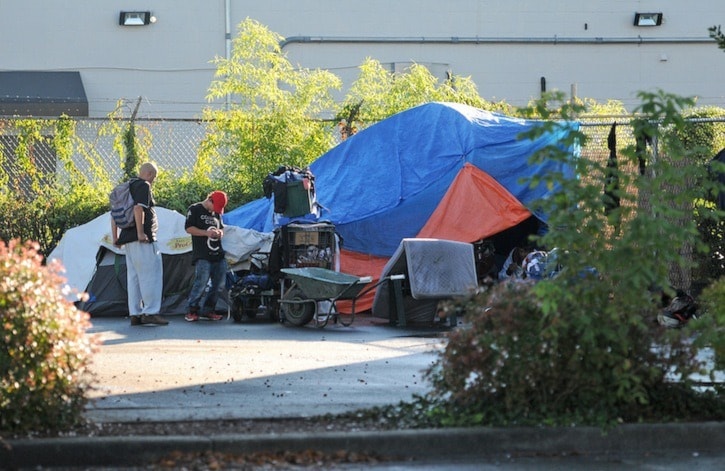Preliminary findings from the latest homeless count in the Fraser Valley Regional District will put a bit of meat on the bones of public speculation.
Although it’s unlikely anyone thought the numbers would be lower than they were in 2014, an increase of 203 per cent for Chilliwack is dramatic. It validates the public’s concern and underscores the need to find a solution.
Homeless numbers in Chilliwack double
According to the survey, done by a host of agencies and led by MCC Community Enterprises, there were 221 individuals identified as homeless this year in the city. That’s 148 more than the 73 counted in 2014, and marks the largest increase since agencies began counting in 2004.
Nearby Abbotsford — with twice the population — counted 50 more homeless than Chilliwack, a rise of 79 per cent, or slightly above the FVRD average.
Beyond the numbers, the survey provides a snapshot of exactly who are living on the streets in the region. Most are male, most are between the ages 40 and 59, and most are struggling with addictions. The greatest barrier to finding appropriate housing, meanwhile, is affordability.
None of this is particularly surprising — only the scale of the problem.
True, it comes at a time when efforts to find a solution are still in progress: the expansion of Ruth and Naomi’s Mission, the low-barrier housing project planned by the Salvation Army, the creation of additional affordable housing by the Mamele’awt Qweesome Housing Society, are three examples.
All these steps will help. The question is, can they keep pace.
FVRD board chair Jason Lum said the numbers illustrate the urgency to find a solution.
“Many communities have made tremendous progress in addressing the challenges faced by those who are living outside,” Lum said. “From an increased number of shelter spaces, expanded outreach services, and improvements to supportive programs, we know that we are making progress but clearly more needs to be done.”
Dr. Ron van Wyk, Executive Director, MCC Community Enterprises, who oversaw the count, agrees.
Over the next few months, the data gathered in this latest homeless count will be studied more closely.
They’ll be looking at where the funding gaps are occurring and how they can craft a more comprehensive approach to helping people get off the streets, and how to prevent them from ending up there in the first place.
They’ll also be looking for partnerships. Because one thing this latest study also confirms, individual municipalities, social agencies and even regional governments can’t do it alone.
• The Homeless Count is conducted every three years and provides a moment-in-time snapshot of homelessness. On March 8 over a 24-hour period, more than 140 agency staff and volunteers fanned out across the region and conducted one-on-one interviews with people living on the streets and in by-ways. A similar count was conducted in Metro Vancouver during the same time period.
